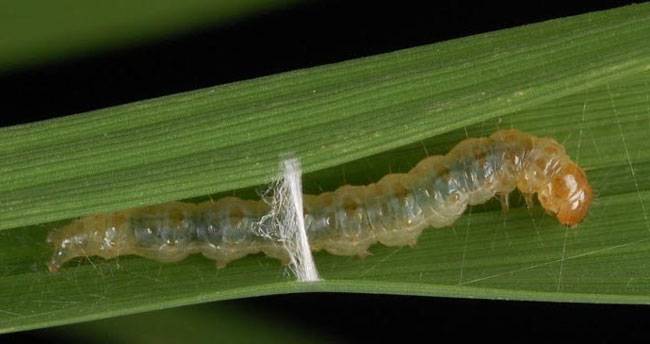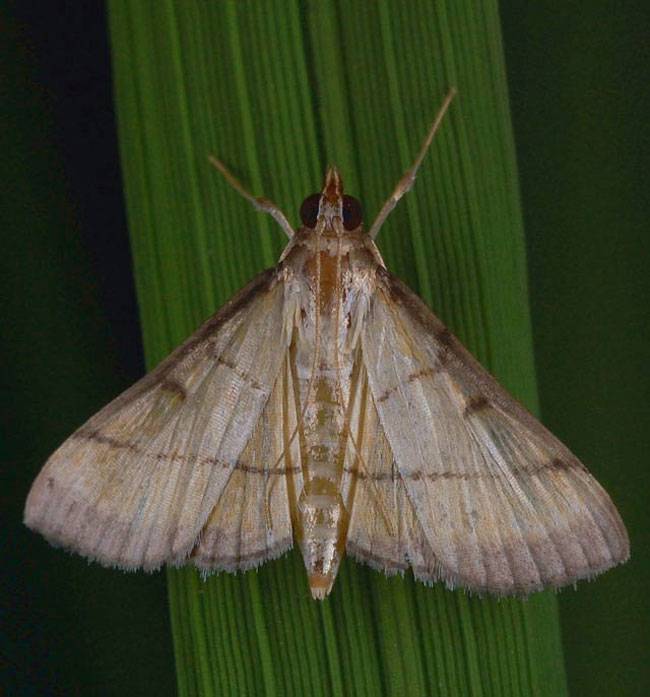Paddy
Rice leaffolder

Rice leaffolder
Cnaphalocrocis medinalis

Rice leaffolder
Cnaphalocrocis medinalis
The rice leaf folder (Cnaphalocrocis medinalis) is a serious pest affecting rice crops worldwide, particularly in tropical and subtropical regions. Its lifecycle, environmental preferences, and feeding habits make it a significant challenge for rice growers.
What It Does
- Leaf folder caterpillars fold rice leaves around themselves, securing the margins with silk strands.
- They feed inside the folded leaves, leaving longitudinal white, transparent streaks on the blades.
- Severe infestations cause folded and damaged leaves, resulting in scorched field appearance.
Why and Where It Occurs
Favorable Conditions:
- Heavy fertilizer use encourages rapid pest multiplication.
- High humidity, shady areas, grassy weeds, and irrigation systems provide ideal conditions.
- Found year-round in tropical areas; in temperate regions, active from May to October.
Behavioral Traits:
- Adults are nocturnal, seeking shade during the day to avoid predators.
- Moths exhibit limited flight when disturbed, staying near their habitat.
How to Identify the Pest
Look for the following signs:
On Plants:
- Tubular folded leaves and longitudinal transparent streaks on damaged leaves.
- Leaf tips fastened to the basal part of the leaf.
- Infested fields appear scorched.
Presence of Insects:
- Disc-shaped eggs laid singly on leaves.
- Young larvae feeding on unopened leaves.
- Folded leaves enclosing larvae and visible fecal matter.
Importance of Control
Impact on Yield:
- During the vegetative phase, plants can recover from damage.
- Infestation during the reproductive phase can cause significant yield losses, especially if the flag leaf and the next two youngest leaves are heavily damaged.
Ecological Concerns:
- Early-season pesticide use disrupts natural predators, leading to secondary pest outbreaks, such as planthoppers.
Management Strategies
Cultural Practices:
- Use resistant rice varieties.
- Follow rice cultivation with a different crop or leave a fallow period.
- Flood and plow fields after harvest.
- Remove grassy weeds and reduce planting density.
Fertilizer Management:
- Apply balanced fertilizer rates to avoid over-fertilization.
Avoid Early-Season Pesticide Use:
- Early pesticide application is often ineffective and harmful to ecological balance.
- Seek advice from crop protection specialists for appropriate measures.
Environmental Impact on Lifecycle
- Temperature and Humidity:
- Optimal temperatures for egg, larva, and pupa development are 28.9°C, 25.1°C, and 23.7°C, respectively.
- Egg hatchability is highest at relative humidity levels of 77–100%.
- Low humidity (<50%) or high temperatures (>28°C) reduce egg viability.
Understanding the lifecycle and environmental preferences of the rice leaf folder can aid in implementing effective, sustainable management strategies to protect rice crops.
